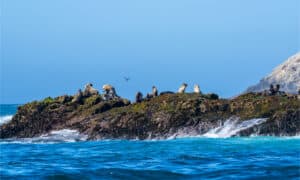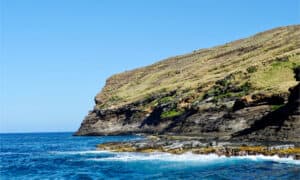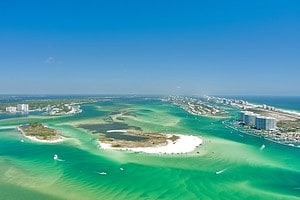A river island is a land mass surrounded by a river. It is an exposed piece of land formed by sediment or sand. It can be a narrow sandbar, a small rock sitting above the surface of the water, or a large island, spanning over a hundred square miles. Read on to discover the largest river island in the United States.
What Is the Largest River Island in the United States?
Sauvie Island, sitting along the Columbia River in Oregon, spans 24,000 acres and is the largest river island in the United States. It’s about 15 miles long, four miles wide, and has a population of approximately 3,600 year-round residents. It’s an increase from the around 1,000 residents that lived on the island according to the 2020 census.
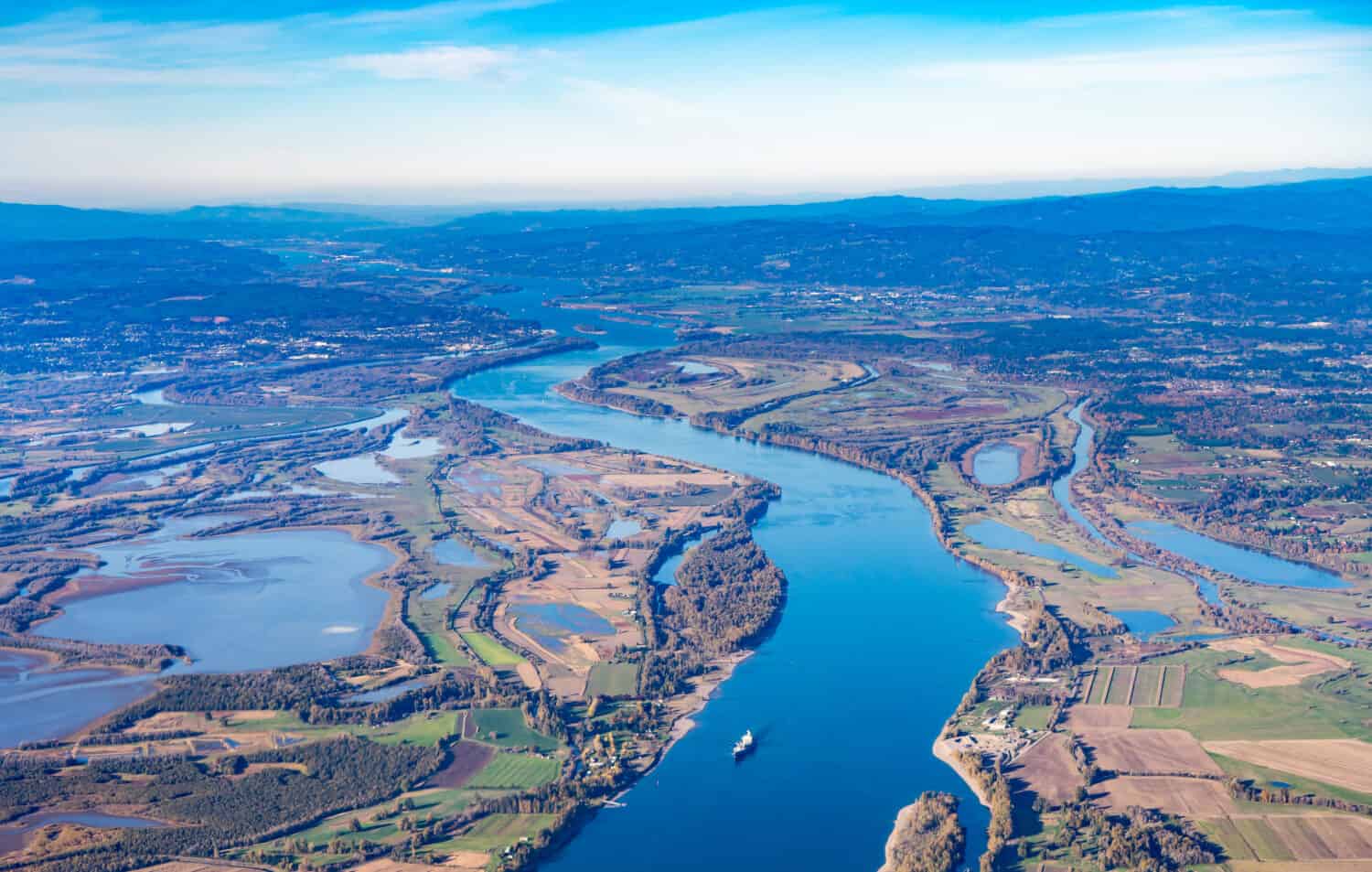
At 24,000 acres, Sauvie Island is the largest river island in the United States.
©Bob Pool/Shutterstock.com
How Does Sauvie Island Compare to Other River Islands?
Sauvie Island may be the biggest river island in the U.S., but it’s not the most well-known. That would go to the borough of Manhattan, which is an island located in the waters between the Hudson and East Rivers in New York City.
On the other hand, the world’s largest river island is Majuli, which lies in the Brahmaputra River in India, at nearly 87,00 acres. Interestingly, the world’s smallest permanently-inhabited river island also lies within the same river. It’s the Umananda Island at just under five acres. Only a handful of people live on the island, including temple priests and some fishermen.
Where is Sauvie Island Located on the Map?
The island is about a 30-minute drive from downtown Portland, OR. It sits at the confluence of the Willamette and Columbia Rivers. The Sauvie Island Bridge connects the island to the mainland as it crosses the Multnomah Channel from U.S. Route 30.
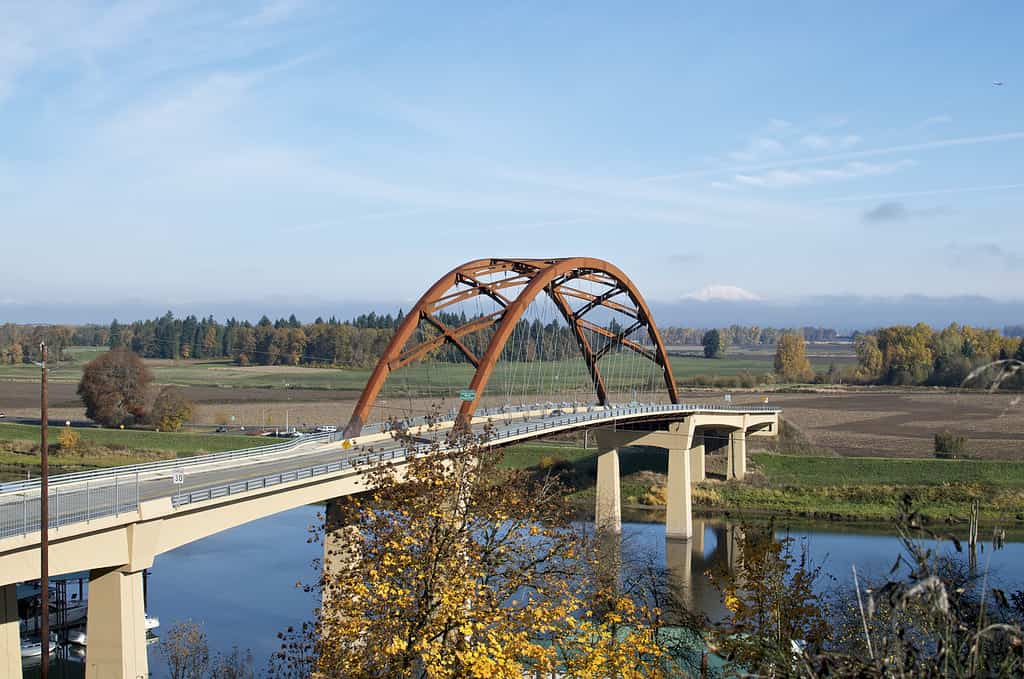
The Sauvie Island Bridge is the only bridge to the island and it crosses the Multnomah Channel near Portland, Oregon.
©iStock.com/GarysFRP
History of Sauvie Island
Sauvie Island’s history spans over a million years when it formed during the Pleistocene era. Sediments that had washed downriver were blocked by a ledge of rocks. Over time, the soil accumulated. And today, the ledge is the island’s northern end, called Warrior Rock. Eventually, the rest of the island formed from the mud and sand deposits, creating a unique landmass in the northwestern U.S.
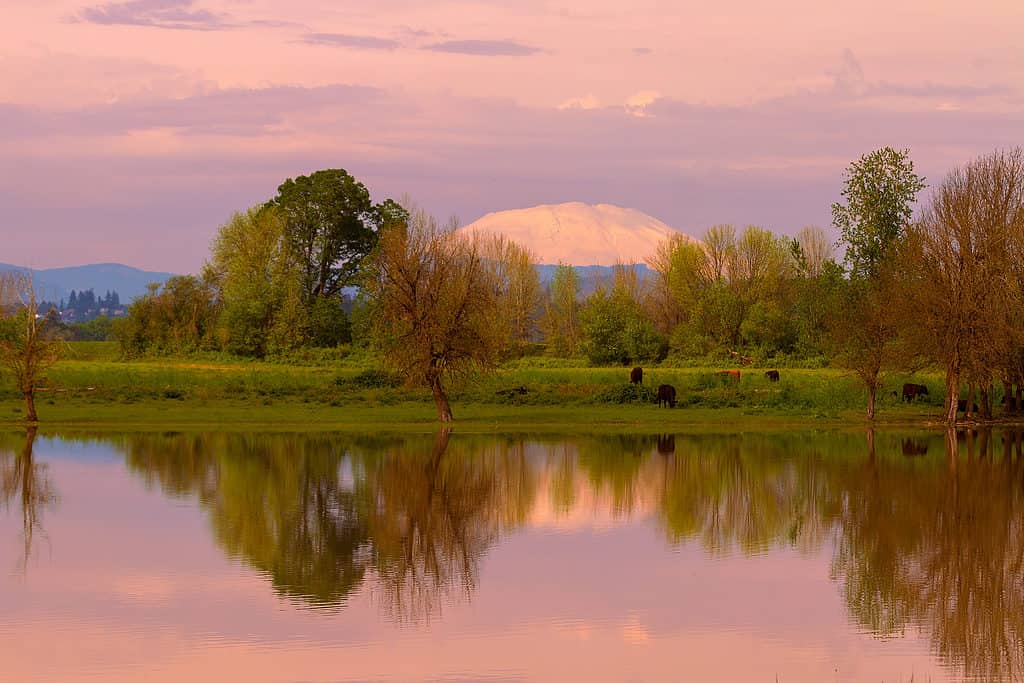
Today, much of Sauvie Island is farmland.
©Thye-Wee gn/Shutterstock.com
The First Residents of the Island
The first residents of the island were tribes of the Chinookan people, called the Multnomah. It’s estimated over 2,000 Multnomah people lived on the island in 15 separate villages, where they hunted, fished, and gathered plants.
Lewis and Clark mapped the island during their 1805 and 1806 expeditions. They originally called it Wappatoe Island. Sadly, the original inhabitants, the Multonomah were nearly extinct after a fever swept through the island in 1830. By the time European settlers arrived, the native population had been decimated, and the area entered a new phase of colonial control.
The Settling of Sauvie Island
About ten years after the devastation of the Multnomah people, the Hudson Bay Company decided they wanted to establish dairylands on the island. The company sent the French dairyman, Laurent Sauvé to the island and he brought with him about 400 cattle.
The island took its name, becoming Sauvie Island. By the 1850s, much of the island was staked out by pioneers, farming the fertile soil. Despite the booming agriculture business, large portions of the island remain untouched and are preserved in a wildlife refuge today.
Sauvie Island Today
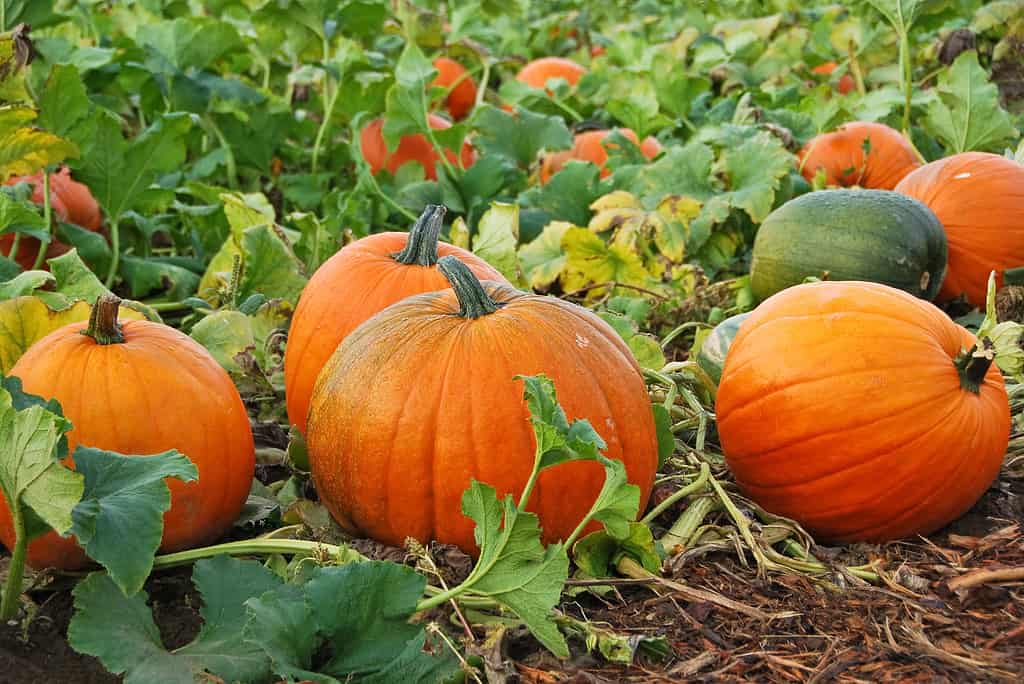
Sauvie Island is a perfect destination for fall with its pick-your-own pumpkin patches.
©Loren L. Masseth/Shutterstock.com
Today, Sauvie Island is a perfect destination for families and nature lovers. The island’s many farms are full of pumpkin patches, berry farms, fresh fruit and vegetables, and fall corn mazes. It’s also a hot spot for hikers, bird watchers, and those looking for recreation in the water or relaxation on the wide, sandy beaches.
Fishing for crappie, catfish, and perch is a popular sport in the island lakes of Sturgeon Lake, Steelman Lake, and Mud Lake. Wine lovers can check out the winery for tasting local varieties. And finally, the north and east coasts of the island are home to sandy beaches for swimmers and sun lovers.
Wildlife on Sauvie Island
According to the Sauvie Island Community Organization, the island is home to about 312 species of wildlife.
Birds
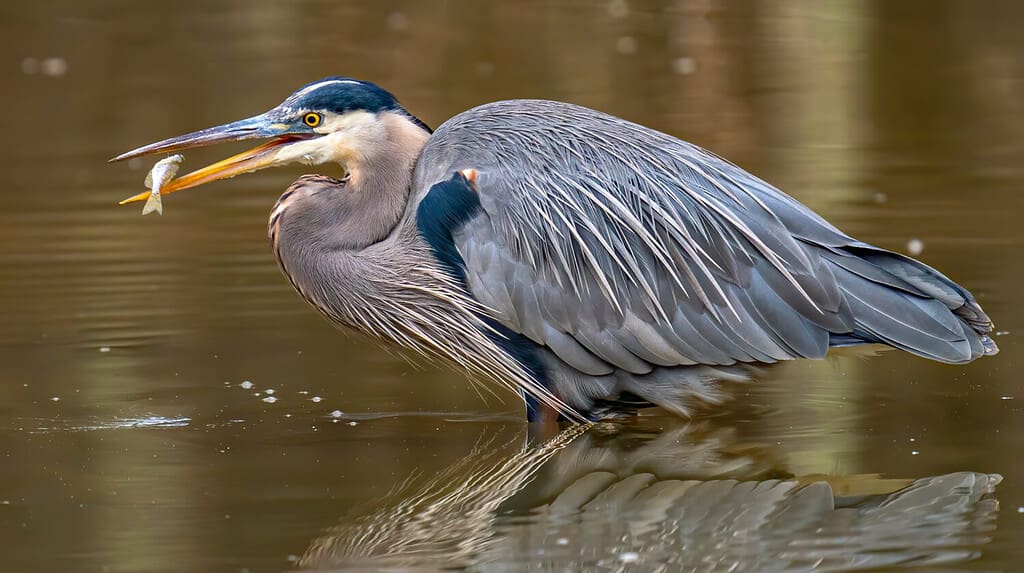
The great blue heron is the largest in North America, standing at four feet tall.
©Krumpelman Photography/Shutterstock.com
Many of those species are birds, including migratory birds and year-round songbird species. Some of the birds that can be found on the island include trumpeter swans, sandhill cranes, bald eagles, great blue herons, and nuthatches. The best place to spot birds is on the northern half of the island in the state-owned wildlife refuge. Geese and ducks number in the thousands in the refuge, along with swans, cranes, and bald eagles.
Mammals
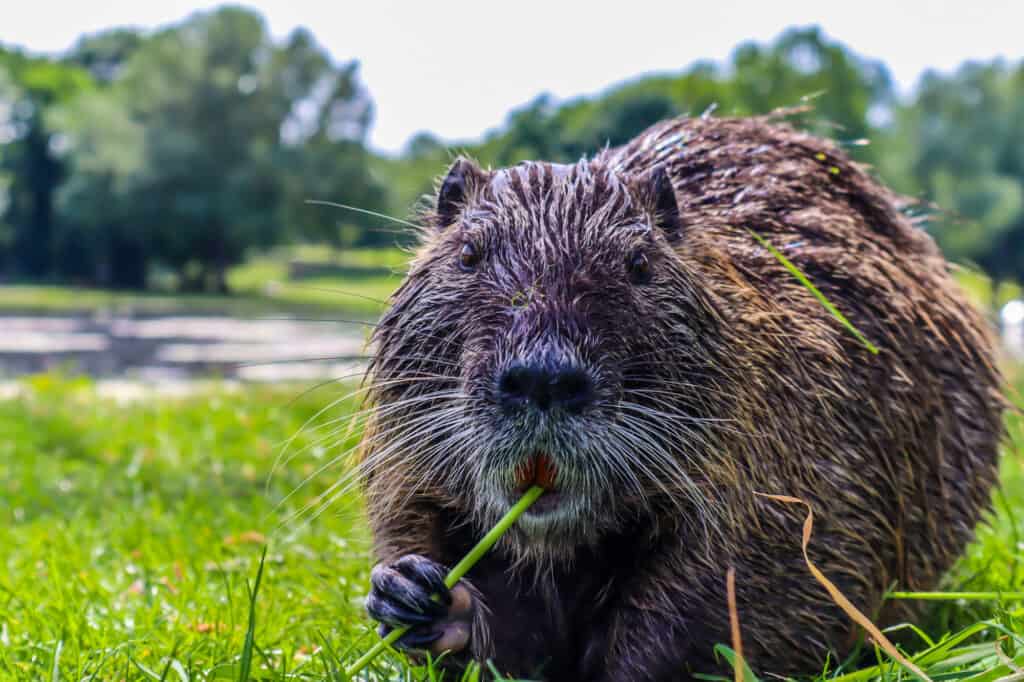
Muskrats are excellent swimmers and can stay underwater for as long as 20 minutes.
©iStock.com/w1d
Sauvie Island is home to many native mammals. Some of these include shrews, brush rabbits, beavers, voles, muskrats, weasels, and river otters. Also, the black-tailed deer roam the island, a less common species than the white-tailed deer. Black-tailed deer in the U.S. can only be found in the states of California, Oregon, and Washington and parts of Alaska.
Amphibians and Reptiles
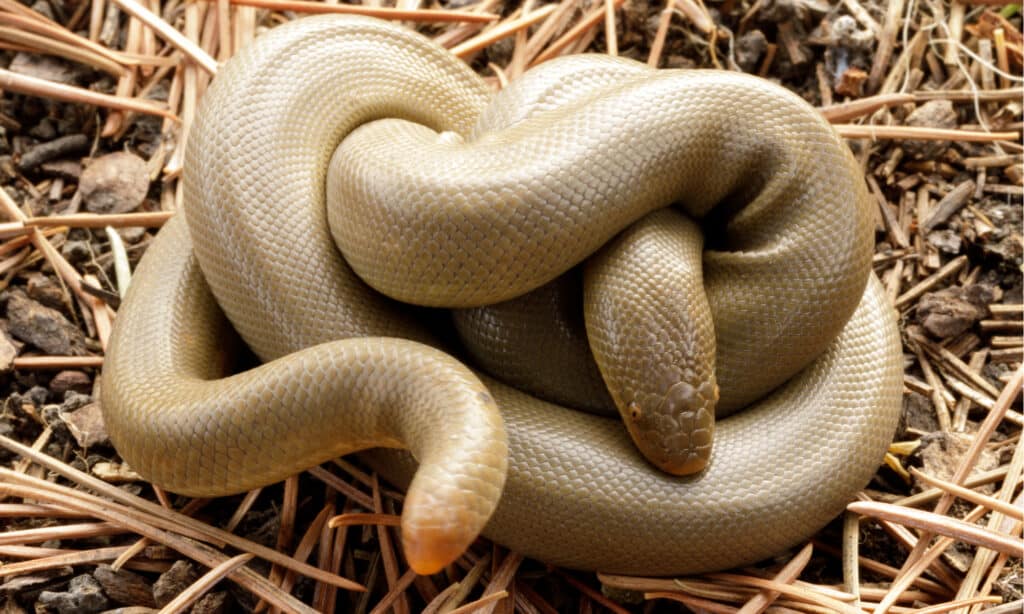
Rubber boas living on Sauvie Island are hard to spot because they hide during the day, and usually only come out at night.
©yhelfman/Shutterstock.com
The island is also a perfect habitat for many amphibians and reptiles including some less common species such as the ringneck snake, rubber boa, Western toad, blue belly (Western fence lizard), and the clouded salamander.
The photo featured at the top of this post is © Bob Pool/Shutterstock.com
Thank you for reading! Have some feedback for us? Contact the AZ Animals editorial team.




